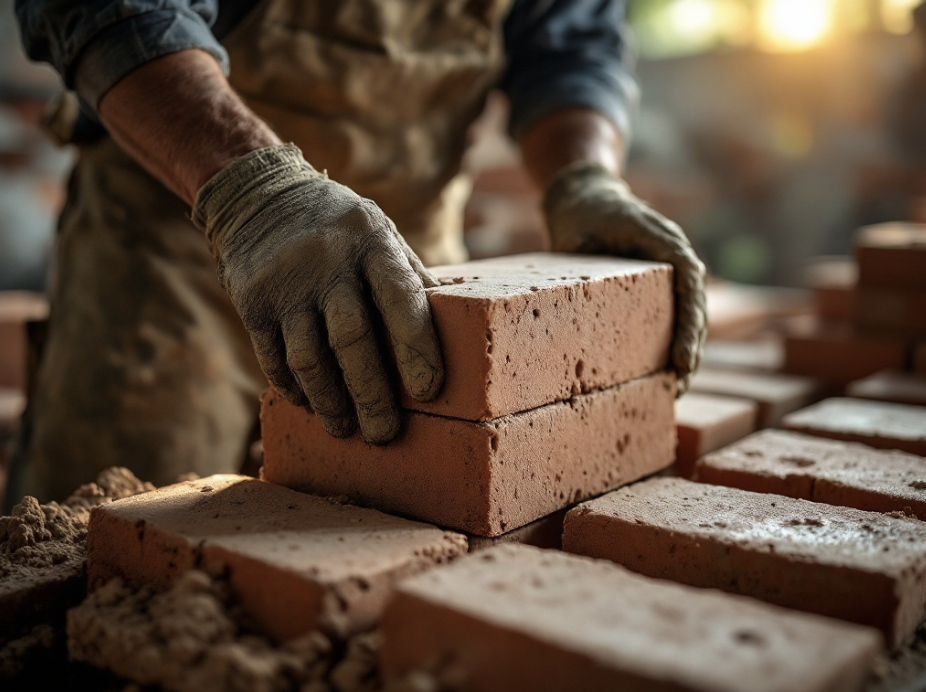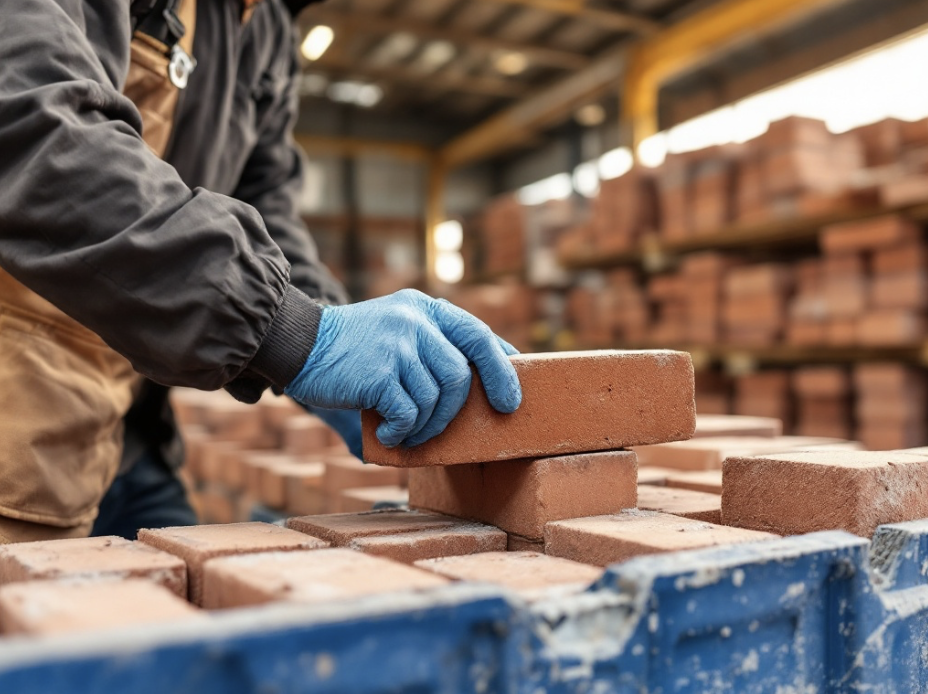Why Are Bricks Used in Construction? The Timeless Benefits of Brick in Building
When it comes to construction materials, few are as historically significant and widely used as bricks. Throughout the centuries, from the ancient cities of Mesopotamia to the modern skylines of New York and London, bricks have stood the test of time. Despite the innovation of new materials, bricks remain a popular choice in construction due to their strength, versatility, and aesthetic appeal.
In this blog post, we will explore the reasons why bricks continue to be an essential component in construction, how they are made, and why they are an ideal option for a wide range of building projects.
Bricks have evolved over the centuries, and modern technology has made their production more efficient. With the help of machinery like the Lontto brick making machine, brick manufacturing has become more cost-effective and eco-friendly. This machine allows for the production of high-quality bricks while minimizing energy consumption, making it an excellent choice for anyone looking to start a brick-making venture.
The Rich History of Brick Use in Construction

Bricks have been used in construction for thousands of years, and their durability has contributed to the longevity of many historical structures. The use of fired clay bricks dates back to at least 7,000 BC in what is now modern-day Turkey. Early civilizations recognized the benefits of using bricks to create stable and long-lasting buildings. From the mud-brick structures of ancient Mesopotamia to the iconic red brick houses of England, brick has consistently been the material of choice for resilient and enduring construction.
Why Bricks Are Still Relevant in Modern Construction
While there are now many more modern materials available for construction, such as steel and concrete, brick remains a fundamental choice for several key reasons. Let's break down the main advantages of bricks in construction:
1. Durability and Strength
Bricks are well known for their exceptional strength and long-lasting durability. They can withstand extreme weather conditions, making them perfect for both cold and hot climates. Brick structures have a lifespan that can span several decades, even centuries, with minimal wear and tear. This is one of the key reasons bricks continue to be used for both residential and commercial buildings.
Key points of durability:
-
Bricks are resistant to fire, moisture, and pests.
-
They offer excellent structural stability.
-
Bricks are low-maintenance and long-lasting, reducing the need for repairs.
2. Thermal and Acoustic Insulation
In addition to being incredibly durable, bricks are also excellent at providing insulation against temperature fluctuations. Whether in a hot or cold environment, brick walls help to maintain a consistent indoor temperature, which can lead to reduced energy consumption for heating and cooling.
Additionally, bricks have soundproofing properties, which make them ideal for creating quiet, peaceful living spaces or offices. They are often used in urban construction to reduce the noise from traffic and nearby activities.
The thermal benefits of bricks:
-
Energy Efficiency: Bricks act as a natural insulator, reducing energy costs by helping maintain the indoor climate.
-
Sound Insulation: Their density helps to reduce the transmission of sound, creating a quieter, more comfortable living space.
3. Aesthetic Appeal
Bricks come in a wide variety of colors, sizes, and textures, allowing them to fit the aesthetic of virtually any building. From the classic red brick to more contemporary shades of cream, yellow, or even black, bricks can be tailored to complement any architectural style.
Common brick styles include:
-
Traditional Red Brick: A timeless classic that works well in both traditional and modern designs.
-
Sandstone Brick: Popular for its earthy tones and rustic appeal.
-
Face Brick: Used for its smooth finish and high-quality appearance, often used for exterior walls.
Bricks offer a beautiful, natural finish that can create a warm and inviting atmosphere, making them a preferred choice for both interior and exterior finishes.
4. Eco-Friendly Material
As sustainability becomes a central concern in modern construction, bricks continue to be a viable, eco-friendly material choice. Bricks are made from natural resources such as clay and shale, which are abundant and renewable. Moreover, they can be recycled and reused in construction projects, reducing waste and promoting a circular economy.
Bricks are also energy efficient because they require less energy to produce compared to materials like cement or steel. Additionally, brick construction can help reduce the carbon footprint of buildings by enhancing their energy efficiency and durability.
5. Cost-Effectiveness
While bricks may initially cost more than some other construction materials, their long-term benefits far outweigh the upfront cost. The durability, low maintenance, and energy-saving qualities of brick construction mean that homeowners and businesses can save on long-term repairs and energy bills.
Bricks also offer good value in terms of aesthetics because they add significant curb appeal, which can enhance property value.
6. Fire Resistance
One of the greatest benefits of using bricks in construction is their resistance to fire. Bricks are made of natural materials that do not easily catch fire, making them one of the safest building materials. In the case of a fire, brick buildings are less likely to suffer extensive damage, and their inherent fire resistance can help slow the spread of flames.
This fire-resistant property is one of the key reasons bricks are often used in the construction of public buildings, schools, and residential homes.
7. Versatility in Design and Function
Bricks are incredibly versatile. Not only can they be used for walls, but they can also be used for floors, walkways, chimneys, and more. In both residential and commercial construction, bricks offer a wide range of possibilities. Whether you're building a new home, a commercial office, or an outdoor feature like a patio, bricks can fit into almost any design scheme.
8. Low Maintenance and Long-Term Benefits

Bricks are renowned for their low-maintenance requirements. Unlike materials such as wood, which may need to be repainted or replaced over time, brick surfaces require very little upkeep. Occasional cleaning is usually all that's needed to maintain their appearance.
Benefits of low maintenance:
-
No Painting Required: Bricks don’t require regular painting like wood or other materials.
-
Resistance to Deterioration: Bricks are not easily damaged by weather, decay, or pests.
-
Minimal Repair Needs: If any issues arise, repairs to brick structures are relatively simple and affordable.
9. Sustainable Manufacturing Process
While brick manufacturing does require energy for firing, many modern brick manufacturers use environmentally conscious methods. Some production facilities now utilize renewable energy sources and advanced techniques that reduce emissions during the firing process. Additionally, bricks can be made with recycled content, further enhancing their sustainability.
Why Bricks Continue to Be the Material of Choice for Builders
Even with the rise of other construction materials like steel, glass, and concrete, bricks continue to dominate the construction industry. This enduring popularity can be attributed to a combination of factors, including:
-
Proven Durability: Bricks are known to last for decades, sometimes even centuries.
-
Versatility: They can be used in a wide range of applications, from residential homes to commercial buildings.
-
Aesthetic Appeal: Bricks offer timeless beauty and come in a variety of finishes.
-
Low Maintenance: With minimal upkeep required, bricks are an affordable long-term choice.
-
Sustainability: Bricks are made from natural, renewable resources and can be recycled.
Conclusion
Bricks are a cornerstone of the construction industry, offering a combination of durability, aesthetic appeal, and versatility that few other materials can match. Whether you're constructing a new home or an office building, the many benefits of bricks ensure that they remain a go-to choice for construction professionals. With their rich history, sustainable properties, and ability to stand the test of time, bricks are undoubtedly a material that will continue to shape the world of construction for generations to come.
In summary, bricks are used in construction for a multitude of reasons, including their long-lasting durability, thermal insulation properties, fire resistance, low maintenance, and timeless beauty. With a wide variety of options and styles to choose from, bricks offer builders and homeowners the flexibility to create strong, aesthetically pleasing structures that can stand the test of time.
Also read
- Maximizing Efficiency with Low-Maintenance Solar Panel Systems
- Cyber Hygiene for Solar Companies: Protecting Your Data from Email Threats
- 5 Hidden Issues That Keep Your Power Bills High With Solar
- Invitation to Solar PV & Energy Storage World Expo 2026
- Exciting Announcement: ASEAN Smart Energy & Energy Storage Expo 2026

